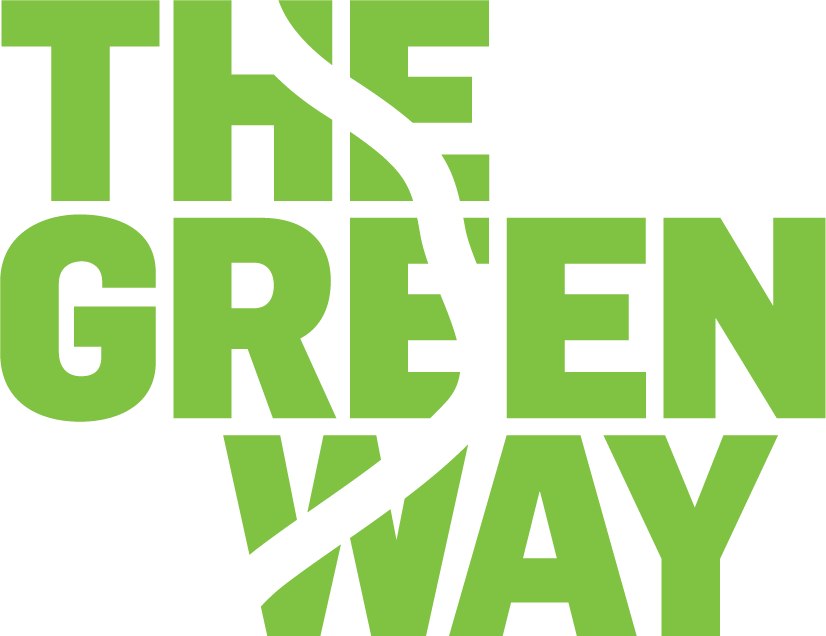As part of the Greenway Conservancy’s Public Art Program, local artist Yu-Wen Wu has been engaging with members of Boston’s Chinatown community for the past 18 months in preparation for the installation of the newest Greenway public artwork, Lantern Stories.
Through in-person community listening sessions and one-on one interviews, this project explores the many layered histories and futures of the neighborhood and community. Lantern Stories celebrates Boston’s Chinatown community. 30 lanterns have been created to illuminate the history of immigration, the community’s culture, and its resiliency.
Thank you to those who joined our July 21 live virtual event, a moderated conversation on Lantern Stories, engaging Chinatown leaders, community members, and artist Yu-Wen Wu. The Conservancy received a number of questions and feedback from the community during this virtual event; below is a collection of these questions, with answers from our panelists.
Were you inspired by any artists or any art pieces that made you want to create this art installation with lanterns specifically?
Yu-Wen Wu (Artist): There are many inspirations in each project—from a poem, a song, to current events. However, Lantern Stories was inspired most by the community’s desire for tradition and the human desire to share stories.
Lanterns are a beautiful expression of the Asian culture. I love the tradition of lighting lanterns and setting them into the night sky or setting them free in the water. Each lantern follows its own course with the air or water current that guides them. Behind each lantern is an individual story and an individual wish. In these gatherings are communal bonds of the shared experiences. I hope the same will be experienced in the installation at Chin Park as each lantern expresses some part of ourselves.
Lanterns are also an expression of celebration. Chin Park holds the annual Lantern Festival and I felt it was important to honor this with lanterns in a contemporary way, encouraging memories and conversation.
Can you talk a little bit more about the Lantern Festival and the importance of this festival in Chinatown communities?
Courtney Ho (Chinatown Main Street): Throughout the ages, lanterns have been used not only as sources of light or simple paper decorations, but they also symbolize vitality, social status, and good luck. In Chinatown, we wanted to create a celebratory and colorful way to support our community. One day, at Chinatown Main Streets, I brought up how fun and colorful lanterns are during the mid-autumn festival in China. In China, children make or are given colorful lanterns and run around the village with family and friends to celebrate the Harvest Moon ending the season. I thought that coming up with the Lantern Festival celebrating near the actual lunar calendar day would be a great way to have friends and family come out and celebrate our community. It is part of the Main Streets mission to support the community and the small businesses in Chinatown, and each event draws a crowd, creates economic activity, and creates a memory and inspires and preserves cultural events.
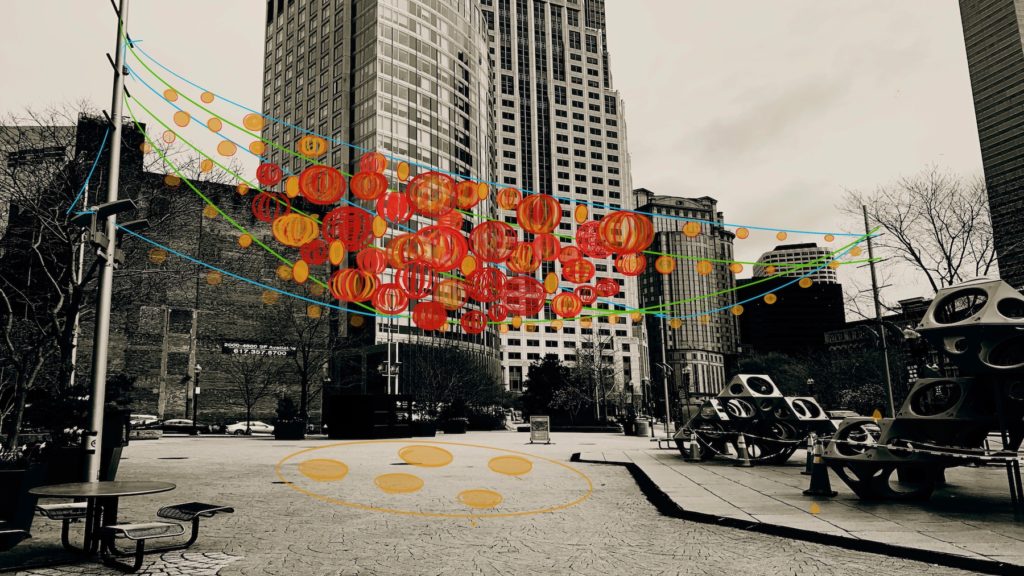
What did the process of a community led jury look like? How was that organized and facilitated?
Sheila Novak (Greenway Conservancy): The artist selection process was focused on selecting an artist who would represent community voices. It was incredibly important to ensure that the power of selecting the artist lay in the hands of the community. Because of this, the Conservancy convened a jury composed of a broad cross-section of voices within the Chinatown community, including community leaders, residents, teens, and art professionals. The jury collaborated on advising which artist would be best suited to this project, considering everything from the relationship to the community, their artistic merit, and their capacity to work on this scale
The Conservancy released a Request for Qualifications, soliciting artists who were interested in the project to submit a few work samples, resume, and statement to be reviewed by the community jury. After reviewing over thirty submissions for the project, the jury met to discuss the various submissions and to deliberate. In our conversations, a few submissions rose to the top of the list and, after evaluating work samples collectively, the jury unanimously selected Yu-Wen Wu for the project.
What is a story you heard, Yu-Wen, that resonated with you?
Yu-Wen Wu (Artist): There are so many stories that resonate with me. Growing up in a community of immigrants and in this country of immigrants, stories are part of my own immigrant experience. The story that launched bodies of artwork began with a story from my grandmother. Her friend, alone at the age of 14 year, escaped from China to Taiwan during the Chinese civil war. Traveling only at night, it took her twelve full moons to reach safety. I drew a 10ft full moon that envelopes the viewer.
In the Leaving/Belongings Project, I am honored to be the keeper of many more stories. And recently learning the history of Emily Chin Guen’s family immigration to the United States is another story of personal, family, and community resiliency. But there are so many more….and if we all really listen to these narratives we hear our own stories.
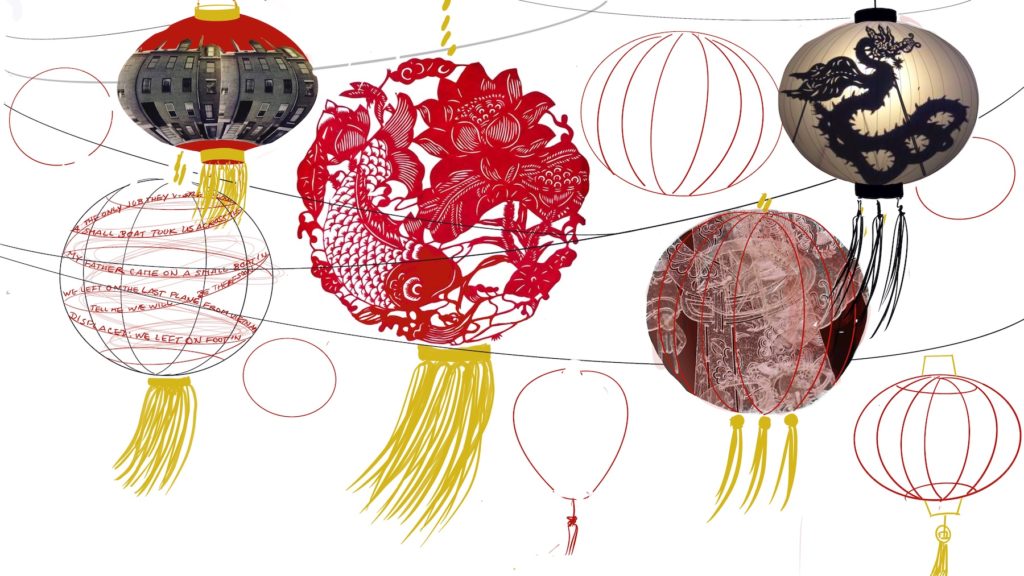
Where and how will the stories that Yu-Wen researched be presented/on display with the lanterns?
Sheila Novak (Greenway Conservancy): All of the lanterns Yu-Wen Wu created will be presented over Chin Park on The Greenway. Annually, for the past few years, Chinatown Main Street has installed a set of colorful lanterns in this location and the new installation is intended to cover the same area. This installation is more specific to the Boston Chinatown community and the stories will be presented on the lanterns themselves. Yu-Wen has created a unique artwork on each lantern, which collectively tell the stories of Boston’s Chinatown.
What are the other anchor projects Jeena mentioned, and how do placemaking projects help secure housing affordability?
Jeena Hah (Asian Community Development Corporation): Without the buying power to purchase land, outbid investors, and build affordable housing, it feels impossible to imagine stabilizing a neighborhood, let alone expand the boundaries of a neighborhood. However, where we may lack in buying power, we have an abundance of “soft power”–our culture, art, and play. Toni Cade Bambara says “the role of the artist is to make the revolution irresistible,” and ACDC’s anchor projects make community campaigns for open spaces, affordable housing, and safe streets irresistible. Building soft power begets the civic power and buying power needed to organize people and resources to meet community demands.
Some of our past and present ANCHOR projects include:
- SaturPLAY, a collaboration with the Greenway Conservancy
- MorePLAY
- Films at the Gate
- With/Out Water
- Residence Lab, a collaboration with Pao Arts Center, artists, and residents
- Chinatown Story Cart, a collaboration with artists Crystal Bi & Lily Xie
- ThinkChinatown: Tied Together By a Thousand Threads
- PS. Never Gonna Give You Up
- Chinatown Backyard
Due to COVID-19, cases of anti-Asian sentiment have been reported and recorded. How has this impacted your creative and community process?
Yu-Wen Wu (Artist): The pandemic and the murder of George Floyd effected the work tremendously. It was clear that the Chinese and all Asian immigration history needed to be told. It was clear that the history of exclusionary policies, racial and social inequities be told. It was clear for all to know that Asian Americans have stood by the Civil Rights Movement and as such Black Lives Matter. It became clear that these stories be acknowledged and discussed as part of the project.
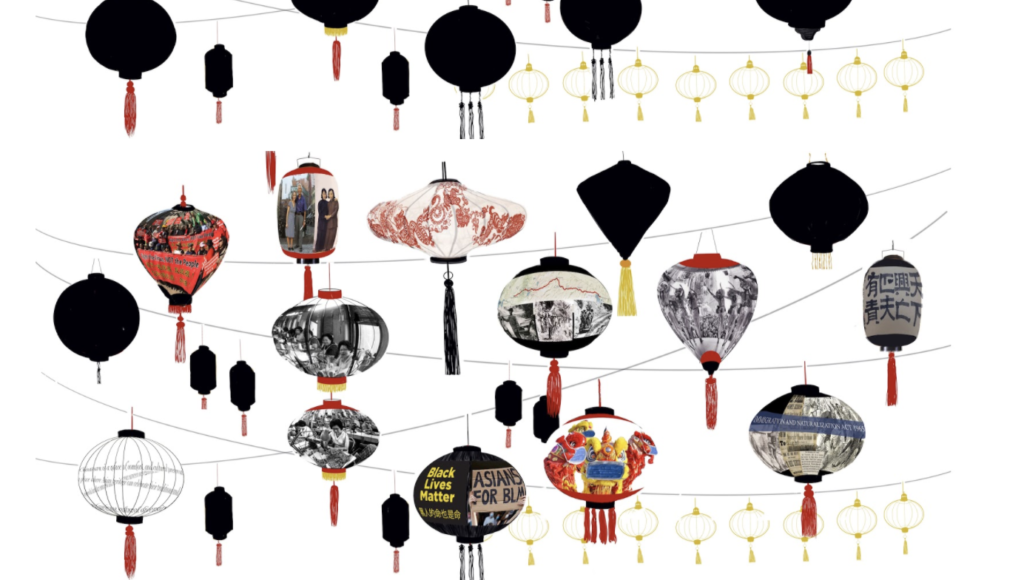
How can visitors / people living in Chinatown help make a positive difference in Chinatown?
Jeena Hah (Asian Community Development Corporation): Support We Love Boston Chinatown, a resilience campaign launched by a collective of community organizations, businesses, residents, and city officials. Check out Take-Out Thursday: grab take-out from a Chinatown restaurant, eat at Chin Park, and enjoy new public art and performers throughout the month. Remember to wear a mask and physically distance!
How can we ‘see’ the lanterns if we cannot travel to see them.
Sheila Novak (Greenway Conservancy): Yu-Wen Wu is working to create didactic information for each of the thirty lanterns. The Conservancy will provide this didactic information on our website after the artwork is installed. This will allow us to document the lanterns on The Greenway for remote viewing, and will also provide more substantial information on all the various moments in history and community stories captured in Yu-Wen Wu’s artwork. We additionally hope to share this information with our partners and over social media, so each lantern gets the attention it deserves!
How can you see the lanterns at night? Are they lit from the inside or is it other lighting in the plaza that will allow us to see them?
Yu-Wen Wu (Artist): Each lantern is lit from within. They will turn on at dusk and stay lit throughout the night until dawn the next day.
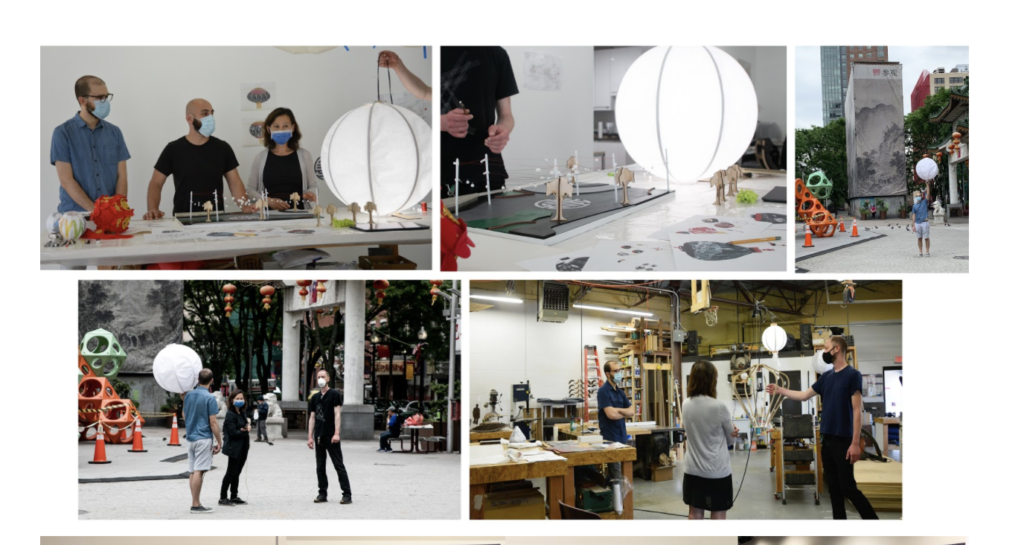
How high up will it be?
Yu-Wen Wu (Artist): The drape of the lanterns will be from 22ft high to about 13ft at the lowest point.
What material will the lanterns be made of?
Yu-Wen Wu (Artist): The Lanterns need to be lightweight and waterproof. The frames of the lanterns are of weatherproof compressed wood. The images are printed on an outdoor fabric with UV protected ink.
Can the lanterns be reinstalled every year?
Sheila Novak (Greenway Conservancy): The Conservancy and Yu-Wen Wu have discussed the possibility of reinstalling this artwork in 2021, contingent on the success of future funding.
